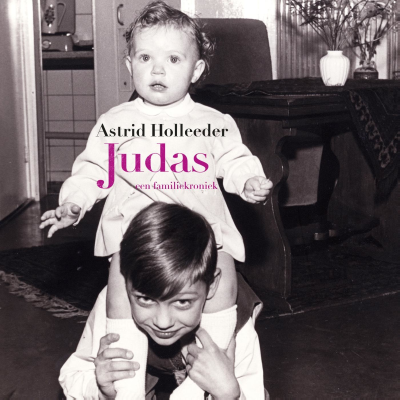
Cardiology Trials
Podcast door Cardiology Trials
An exploration of pivotal clinical trials in cardiovascular medicine that have significantly influenced the field. This podcast aligns with our public...
Probeer 14 dagen gratis
Na de proefperiode € 9,99 / maand.Elk moment opzegbaar.
Alle afleveringen
105 afleveringenN Engl J Med 2024;390:1481-1492 [https://www.nejm.org/doi/full/10.1056/NEJMoa2314149] Background: In patients with ST-elevation myocardial infarction (STEMI), opening the culprit artery improves outcomes. Nearly half of STEMI patients have disease in other coronary arteries. Whether revascularizing these non-culprit arteries improves outcomes remained uncertain. The PRAMI trial [https://cardiologytrials.substack.com/p/review-of-the-prami-trial] showed improvement in outcomes with complete revascularization but was relatively small, included 465 patients, and did not require the use of fractional flow reserve (FFR). Cardiology Trial’s Substack is a reader-supported publication. To receive new posts and support our work, consider becoming a free or paid subscriber. The FFR-Guidance for Complete Nonculprit Revascularization (FULL REVASC) trial [https://www.nejm.org/doi/full/10.1056/NEJMoa2314149] sought to assess if FFR-guided completed revascularization improves outcomes compared to culprit-only percutaneous coronary intervention (PCI). The COMPLETE trial was not published by the time the FULL REVASC trial started enrolling patients. Patients: Eligible patients had STEMI and were undergoing PCI or had high risk NSETMI undergoing urgent PCI. High risk NSTEMI included patients with dynamic ST–T-wave changes, ongoing chest pain, acute heart failure, hemodynamic instability independent of electrocardiographic changes, or life-threatening ventricular arrhythmias. Eligible patients had to have multivessel coronary artery disease, defined as one or more lesions in a nonculprit artery with a diameter of ≥ 2.5 mm and a visually graded stenosis of 50 - 99%. Patients were excluded if they had previous CABG, left main disease or cardiogenic shock. Baseline characteristics: The trial randomized 1,542 patients – 778 randomized to culprit-only PCI and 764 randomized to complete revascularization. Patients were recruited from 32 centers in 7 countries. Approximately 91% of the patients had STEMI and 9% had high risk NSTEMI. The average age of patients was 65 years and 76% were men. Approximately 51% had hypertension, 16% had diabetes, 23% were on treatment for hyperlipidemia, 8% had prior myocardial infarction, and 35% were current smokers. The number of residual coronary arteries with stenosis of 50-99% was 1 in 72% of the patients and 2 or more in the rest. Procedures: Patients were randomly assigned in a 1:1 ratio to undergo culprit-only PCI or FFR-guide complete revascularization. The study was open label. Patients in the culprit-PCI only group did not receive further revascularization during the index hospitalization. Patients in the FFR-guided complete revascularization could receive further revascularization during the index procedure or during the index hospitalization. PCI of non-culprit lesion was recommended if FFR was 0.80 or less. Endpoints: The primary outcome was a composite of death from any cause, myocardial infarction, or unplanned revascularization. The main secondary outcomes were a composite of death from any cause or myocardial infarction and unplanned revascularization Analysis was performed based on the intention-to-treat principle. The estimated sample size to achieve 80% with a two-sided alpha of 0.05 was 4,052 patients. This sample size would detect 0.75 risk ratio for the composite outcome of death or myocardial infarction at 1-year assuming 9.9% event rate in the culprit-only PCI. After the publication of the COMPLETE trial, the trial was stopped early due to ethical and feasibility concerns. Consequently, the original key secondary outcome (death from any cause, myocardial infarction, or unplanned revascularization) became the new primary outcome, and events after 1 year of follow-up were included in the primary analysis. Results: The trial was stopped after randomizing 38.1% of the original sample size. Among the patients assigned to the FFR-guided complete-revascularization arm, the procedure was followed in 95.9% of the patients, and among these patients, 17.9% underwent FFR-guided complete revascularization of non-culprit lesions during the primary PCI and the rest during the index hospitalization. Among the patients assigned to culprit-only arm, the assigned strategy was followed in 99.6% of the patients. The median follow-up time was 4.8 years. FFR was 0.8 or less in 392 (47.3%) of non-culprit vessels assessed, and PCI was performed in 369 (94.1%) of these vessels. In total, PCI was performed in 18.8% of the total non-culprit vessels. The average number of stents during the index hospitalization was 1 in the culprit-only PCI group and 2 in the complete revascularization group. The primary composite outcome was not significantly different between both treatment groups (19.0% with complete-revascularization vs 20.4% with culprit-only PCI, HR: 0.93, 95% CI: 0.74 - 1.17; p= 0.53). There were also no significant differences in composite endpoint of death from any cause or myocardial infarction (16.5% with complete revascularization vs 15.3% with culprit-only PCI) or unplanned revascularization (9.2% with complete revascularization vs 11.7% with culprit-only PCI). Stent thrombosis and stent restenosis were significantly more frequent in the complete revascularization arm (2.5% vs 0.9%, HR: 2.80, 95% CI: 1.18 – 6.67) and (4.2% vs 2.3%, HR: 1.84, 95% CI: 1.03 – 3.28), respectively. Baseline risk or coronary anatomy did not significantly affect subgroup interactions for the primary outcome. Conclusion: In patients with STEMI or high risk NSTEMI, FFR-guided complete revascularization compared to culprit-only PCI, did not improve the outcomes of death from any cause, myocardial infarction, or unplanned revascularization, over a median follow up time of 4.8 years. Complete revascularization resulted in more stent thrombosis and stent restenosis. The study lost some statistical power by stopping early, resulting in a final power of 74%. We disagree with the authors' decision to halt the trial prematurely based on the findings of the COMPLETE trial. COMPLETE was the first large trial to demonstrate a benefit in hard outcomes when revascularizing stable plaques, and its results warrant further confirmation. Furthermore, COMPLETE used different strategy as FFR was not required. Note to readers: Power measures the study’s ability to avoid a Type II error (false negative) and it equals 1 - β with β being the probability of a Type II error. In other words, power represents the probability of correctly rejecting the null hypothesis (H₀) when the alternative hypothesis (H₁) is true. Most clinical trials aim for 80% or 90% power. For example, a study with 80% power has a 20% risk of failing to detect a real effect. Cardiology Trial’s Substack is a reader-supported publication. To receive new posts and support our work, consider becoming a free or paid subscriber. Get full access to Cardiology Trial’s Substack at cardiologytrials.substack.com/subscribe [https://cardiologytrials.substack.com/subscribe?utm_medium=podcast&utm_campaign=CTA_4]
N Engl J Med 2019;381:1411-1421 [https://www.nejm.org/doi/full/10.1056/NEJMoa1907775#ap2] Background Percutaneous coronary intervention (PCI) had been clearly established as the standard of care for ST elevation myocardial infarction. Yet many patients taken for PCI have multiple lesions in addition to the culprit. The benefit of routinely treating additional significant lesions has been unclear, with previous smaller trials showing reductions in composite outcomes primarily driven by reduced revascularization rates. Cardiology Trial’s Substack is a reader-supported publication. To receive new posts and support our work, consider becoming a free or paid subscriber. The COMPLETE [https://www.nejm.org/doi/full/10.1056/NEJMoa1907775] (Complete vs Culprit-Only Revascularization Strategies to Treat Multivessel Disease after Early PCI for STEMI) trial investigated whether performing percutaneous coronary intervention (PCI) on non-culprit lesions reduces cardiovascular risk in patients with ST-segment elevation myocardial infarction (STEMI) and multivessel coronary artery disease. Patients The trial enrolled 4,041 patients from 140 centers in 31 countries between February 2013 and March 2017. Eligible patients had STEMI with successful culprit-lesion PCI and at least one non-culprit coronary artery lesion with ≥70% stenosis (or 50-69% stenosis with FFR ≤0.80) in a vessel ≥2.5mm in diameter. Patients were randomized within 72 hours after successful culprit-lesion PCI. Exclusion criteria included planned surgical revascularization and previous coronary bypass surgery. Baseline Characteristics The mean age was approximately 62 years, with about 80% being male. Approximately 19% had diabetes, 8% had previous MI, and 7% had previous PCI. Over 90% of patients underwent primary PCI (vs. pharmacoinvasive or rescue PCI), with 80% using radial access. The groups were well-balanced, with similar SYNTAX scores at baseline and similar culprit and non-culprit lesion characteristics. About 76% had one residual diseased vessel and 24% had two or more. Guideline directed medical therapy was robust and balanced, including more than 99% on dual antiplatelet therapy, 98% on statins, 88% on beta blocker, and 85% on ACEi or ARB. In patients in the complete revascularization group designated for non-culprit PCI during index hospitalization, the mean time to PCI was 1 day. In the group designated for non-culprit PCI after discharge, the mean time was 23 days. Trial procedures Patients were randomized to complete revascularization (n=2,016) or culprit-lesion-only PCI (n=2,025). In the complete revascularization group, investigators specified before randomization whether non-culprit PCI would occur during index hospitalization or after discharge (within 45 days). Everolimus-eluting stents were recommended for all procedures. Both groups received guideline-based medical therapy including dual antiplatelet therapy with aspirin and ticagrelor for at least one year. Endpoints The first coprimary outcome was cardiovascular death or new myocardial infarction. The second coprimary outcome was cardiovascular death, myocardial infarction, or ischemia-driven revascularization. Secondary outcomes included individual components of the composite outcomes, all-cause mortality, and safety outcomes like major bleeding, stroke, and stent thrombosis. Trialists estimated that a sample of 4000 patients would give 80% power to detect a 22% lower risk of the composite of cardiovascular death or myocardial infarction in the complete-revascularization group than in the culprit-lesion-only PCI group, assuming an event rate of 5% per year in the culprit-lesion-only PCI group. The first coprimary outcome was tested at a P value of 0.045 and the second at a P value of 0.0119. The co-primary endpoints were analyzed according to the time to first event approach. Confidence intervals for secondary and exploratory efficacy outcomes were not adjusted for multiple comparisons, and therefore inferences drawn from these intervals may not be reproducible. Results Over a median follow-up of 36.2 months, the first coprimary outcome occurred in 7.8% of the complete-revascularization group versus 10.5% of the culprit-lesion-only group (hazard ratio 0.74, 95% CI: 0.60-0.91; p= 0.004). Benefit was driven by reduced myocardial infarction rates (5.4% vs 7.9%) while cardiovascular death rates were similar (2.9% vs 3.2%). The second coprimary outcome was also reduced with complete revascularization (8.9% versus 16.7%, HR: 0.51, 95% CI: 0.43-0.61; p<0.001). The benefit was consistent regardless of whether PCI was performed during index hospitalization or after discharge. There were no significant differences in major bleeding, stroke, or stent thrombosis between groups. The Kaplan-Meier curves show that the benefit of complete revascularization seemed to have emerged over time, with continued divergence of the Kaplan–Meier curves for several years. There was a trend toward higher contrast-induced kidney injury in the complete revascularization arm (Odds ratio: 1.59, 95% CI: 0.89 - 2.84; p= 0.11). Conclusion Among STEMI patients with multivessel coronary artery disease, a strategy of complete revascularization was superior to culprit-lesion-only PCI in reducing the composite outcome of cardiovascular death or myocardial infarction. This benefit was driven by reduction in myocardial infarctions without significant reduction in cardiovascular death. The benefit was consistent whether non-culprit PCI was performed during the index hospitalization or after discharge. The number needed to treat to prevent one cardiovascular death or myocardial infarction was 37 patients over 3 years. Cardiology Trial’s Substack is a reader-supported publication. To receive new posts and support our work, consider becoming a free or paid subscriber. Get full access to Cardiology Trial’s Substack at cardiologytrials.substack.com/subscribe [https://cardiologytrials.substack.com/subscribe?utm_medium=podcast&utm_campaign=CTA_4]
N Engl J Med 2013;369:1115-23 [https://www.nejm.org/doi/full/10.1056/NEJMoa1305520] Background: The COURAGE trial [https://cardiologytrials.substack.com/p/review-of-the-courage-trial] was published in 2007. It compared up-front PCI to medical therapy alone in patients with stable CAD. Preventive PCI did not reduce the chance of dying or having a heart attack over a median follow up time of 5 years. The results rocked the cardiology world because for years prior to the publication of COURAGE, the standard of care called for revascularization of obstructive coronary stenosis. Despite what we would consider minor criticisms of COURAGE, the results have held over time as a preventive PCI strategy has failed repeatedly to reduce death or MI compared to medicine alone in subsequent large trials (BARI 2D [https://cardiologytrials.substack.com/p/review-of-the-bari-2d-trial], FAME 2 [https://cardiologytrials.substack.com/p/review-of-the-fame-2-trial], ISCHEMIA and ISCHEMIA-CKD [https://cardiologytrials.substack.com/p/review-of-the-ischemia-and-ischemia]) involving patients with stable CAD. But what about patients with acute coronary syndromes who have, a clearly defined “culprit” lesion and stable coronary stenosis of a non-infarct vessel? On the surface, the answer might seem simple - treat the “culprit” lesion with PCI and leave the stable disease alone. Continue optimal medical treatment of stable CAD indefinitely with consideration of revascularization only if new symptoms arise. But what if a stable coronary stenosis behaves differently in a patient with an acute coronary syndrome than in patients without it? Are these patients predisposed or particularly susceptible to acute plaque rupture and thrombogenesis to such an extent that they would benefit from a preventive revascularization strategy? The Primary Angioplasty in Myocardial Infarction (PRAMI) trial sought to test the hypothesis that immediate preventive PCI of non-culprit vessels plus the culprit vessel compared to culprit vessel only PCI would improve outcomes in patients with a STEMI and coronary stenosis of a non-infarct related artery. Cardiology Trial’s Substack is a reader-supported publication. To receive new posts and support our work, consider becoming a free or paid subscriber. Patients: From 2008 through 2013, patients were enrolled from 5 coronary care centers in the United Kingdom. Patients could be any age with acute STEMI and multivessel CAD detected at the time of emergency PCI. The trial was limited to patients with STEMI because ST-segment elevation, unlike ST-segment depression, localizes the area of ischemia in the myocardium and an “infarct-artery” is usually easy to distinguish. Clinically stable patients were considered for eligibility after undergoing PCI of the infarct artery while they were in the catheterization lab. They were eligible if successful PCI of infarct artery was performed and there was stenosis of 50% or more in one or more non-infarct arteries. Exclusion criteria included cardiogenic shock, previous CABG, had left main or significant disease in the ostia of both the LAD and circumflex vessels, or if the only non-infarct stenosis was a chronic total occlusion. Baseline characteristics: The trial screened 2,428 patients and randomized 465 patients (19%) with 234 to preventive PCI and 231 to no preventive-PCI. The majority of patients were excluded for single vessel disease (1122/1922 [58%]). The average age of patients was 62 years and more than 75% were men. Close to 50% were current smokers. The infarct artery was anterior in 35%, inferior in 60% and lateral in 5%. Approximately 65% of patients had 2 vessel disease and 35% had 3 vessel disease. Procedures: After completion of PCI in the infarct artery, eligible patients were randomized and those assigned to the preventive-PCI group underwent the procedure immediately in all non-infarct arteries with a coronary stenosis >50%. PCI was discouraged at a later date (sometimes this strategy is referred to as “staged PCI”) in the no preventive-PCI group unless it was symptom driven. Any patient in the trial with subsequent symptoms of angina that were not controlled with medicine was required to undergo objective assessment of ischemia to secure a diagnosis of refractory angina. Follow-up information was collected at 6 weeks and then yearly thereafter. Endpoints: The primary endpoint was a composite of death from cardiac causes, nonfatal MI, or refractory angina. Secondary outcomes included the individual components of the composite endpoint along with noncardiac death and repeat revascularization. Myocardial infarction was defined as symptoms of cardiac ischemia and a troponin level >99% URL. However, within 14 days after randomization, MI diagnosis also required ECG evidence of new STE or left bundle branch block and angiographic evidence of coronary artery occlusion (essentially this makes it so only in-stent thrombosis or spontaneous STEMI count and other causes of peri-procedural MI do not - this would bias the trial in favor of the preventive-PCI group). Refractory angina was defined as angina despite medical therapy and objective evidence of myocardial ischemia (i.e., ischemia on ECG during spontaneous episode of pain or abnormal results on functional testing). It was determined that 600 patients would be needed to achieve 80% power to detect a 30% relative reduction in the preventive-PCI group, at a 5% level of significance, assuming an annual rate of the primary outcome of 20% in the control group. Stopping criteria were prespecified if the results from the trial showed a primary outcome difference at the 0.001 level of significance. Results: The trial was stopped early based on a significant difference (P<0.001) in the incidence of the primary outcome favoring the preventive-PCI group after the 2nd interim analysis was performed. At the time the trial was stopped, 465 patients were enrolled with 234 in the preventive-PCI group and 231 in the control group. Patients in the preventive-PCI group had an average of 1.29 stents placed in non-infarct arteries and these were primarily drug eluting stents (71%). Compared to no preventive-PCI, preventive-PCI significantly reduced the primary outcome (9.0% vs 23%; HR 0.35; 95% CI 0.21-0.58) along with the individual components of nonfatal MI (3.0% vs 8.7%; HR 0.32; 95% CI 0.13-0.75) and refractory angina (5.1% vs 13.0%; HR 0.35; 95% CI 0.18-0.69). Cardiac death was also numerically reduced with preventive-PCI but did not reach statistical significance due to low power. Conclusions: In patients with STEMI and non-infarct artery coronary stenosis >50%, preventive PCI significantly reduced a primary composite outcome of cardiac death, nonfatal MI and refractory angina in the PRAMI trial with an estimated NNT of 7 patients over 2 years. Individual components of the primary endpoint that were significantly reduced included nonfatal MI and refractory angina by similarly large margins. These results may seem impressive at first glance but we urge extreme caution in their interpretation. First, this is a relatively small trial with a historically large effect size, especially when considering hard endpoints like cardiac death and nonfatal MI were included. Such results are often later found to be falsely positive when larger, confirmatory studies are conducted. Second, the trial was stopped early and early stopping is prone to yield false positive and/or exaggerated results [https://www.sciencedirect.com/science/article/abs/pii/S0895435607002922#:~:text=Results,in%20the%20interpretation%20of%20results.]. Third, inclusion of refractory angina in the primary endpoint, an endpoint susceptible to bias in an unblinded study (see earlier discussion of “faith healing” and “subtraction anxiety” [https://cardiologytrials.substack.com/p/review-of-the-fame-2-trial] in FAME 2; consideration also must be given to nocebo effects in patients who know they have “untreated blockages”), clouds the main findings by inflating the effect size and making the trial susceptible to large differences in underpowered endpoints before sufficient data can be accumulated on hard outcomes. For example, if the trial had sought to detect a conservative difference of 30% in a primary composite endpoint that only included cardiac death or nonfatal MI, based on an event rate of 12% in the control group (the actual event rate in the trial), over 2,200 patients would be needed for 80% power at a 5% level of significance. The estimated number of actual events would be around 230. However, only 47 events occurred in PRAMI making the results highly susceptible to noise. While results of PRAMI suggest a beneficial role for preventive-PCI in patients with STEMI, more evidence is needed to confirm the results. Thanks for reading Cardiology Trial’s Substack! This post is public so feel free to share it. Get full access to Cardiology Trial’s Substack at cardiologytrials.substack.com/subscribe [https://cardiologytrials.substack.com/subscribe?utm_medium=podcast&utm_campaign=CTA_4]
For full review of the trials, please visit https://cardiologytrials.substack.com/ [https://cardiologytrials.substack.com/] Get full access to Cardiology Trial’s Substack at cardiologytrials.substack.com/subscribe [https://cardiologytrials.substack.com/subscribe?utm_medium=podcast&utm_campaign=CTA_4]
For full review of the trials, please visit https://cardiologytrials.substack.com/ [https://cardiologytrials.substack.com/] Get full access to Cardiology Trial’s Substack at cardiologytrials.substack.com/subscribe [https://cardiologytrials.substack.com/subscribe?utm_medium=podcast&utm_campaign=CTA_4]
Overal beschikbaar
Luister naar Podimo op je telefoon, tablet, computer of auto!
Een universum van audio-entertainment
Duizenden luisterboeken en exclusieve podcasts
Geen advertenties
Verspil geen tijd met het luisteren naar reclameblokken wanneer je luistert naar de exclusieve shows van Podimo.
Probeer 14 dagen gratis
Na de proefperiode € 9,99 / maand.Elk moment opzegbaar.
Exclusieve podcasts
Advertentievrij
Gratis podcasts
Luisterboeken
20 uur / maand



















